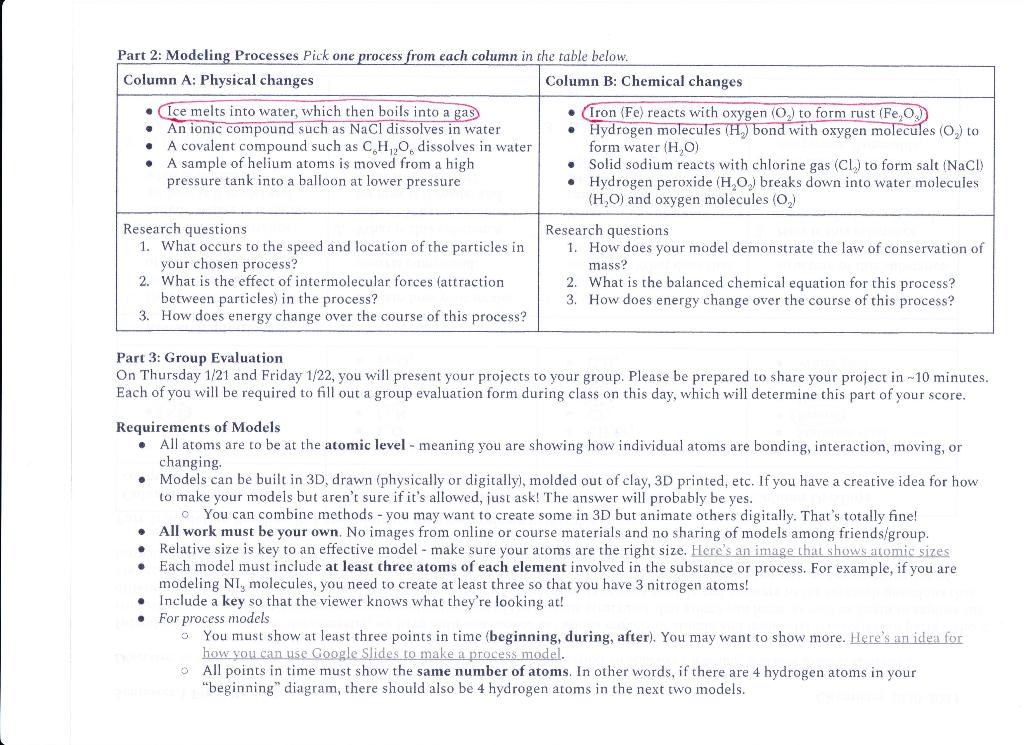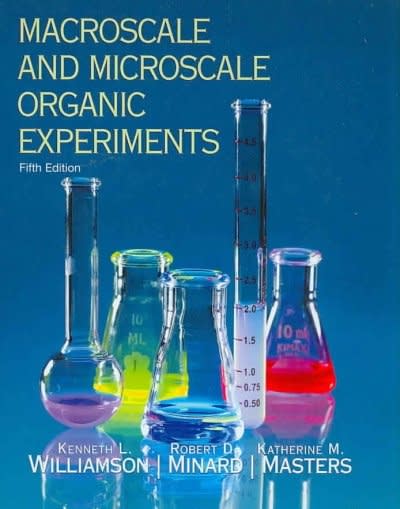
. Part 2: Modeling Processes Pick one process from each column in the table below. Column A: Physical changes Column B: Chemical changes Ice melts into water, which then boils into a gas Iron (Fe) reacts with oxygen (0.) to form rust (Fe, O.) An ionic compound such as NaCl dissolves in water Hydrogen molecules (H) bond with oxygen molecules (o,) to A covalent compound such as CH 0. dissolves in water form water (HO) A sample of helium atoms is moved from a high Solid sodium reacts with chlorine gas (Cl) to form salt (NaCl) pressure tank into a balloon at lower pressure Hydrogen peroxide (H,O,) breaks down into water molecules (HO) and oxygen molecules (0) Research questions Research questions 1. What occurs to the speed and location of the particles in 1. How does your model demonstrate the law of conservation of your chosen process? mass? 2. What is the effect of intermolecular forces attraction 2. What is the balanced chemical equation for this process? between particles) in the process? 3. How does energy change over the course of this process? 3. How does energy change over the course of this process? Part 3: Group Evaluation On Thursday 1/21 and Friday 1/22, you will present your projects to your group. Please be prepared to share your project in -10 minutes. Each of you will be required to fill out a group evaluation form during class on this day, which will determine this part of your score. Requirements of Models All atoms are to be at the atomic level - meaning you are showing how individual atoms are bonding, interaction, moving, or changing Models can be built in 3D, drawn (physically or digitally), molded out of clay, 3D printed, etc. If you have a creative idea for how to make your models but aren't sure if it's allowed, just ask! The answer will probably be yes. . You can combine methods - you may want to create some in 3D but animate others digitally. That's totally fine! All work must be your own. No images from online or course materials and no sharing of models among friends/group. Relative size is key to an effective model - make sure your atoms are the right size. Here's an image that shows atomic sizes Each model must include at least three atoms of each element involved in the substance or process. For example, if you are modeling NI, molecules, you need to create at least three so that you have 3 nitrogen atoms! Include a key so that the viewer knows what they're looking at! For process models You must show at least three points in time (beginning, during, after). You may want to show more. Here's an idea for how you can use Google Slides to make a process model. All points in time must show the same number of atoms. In other words, if there are 4 hydrogen atoms in your "beginning" diagram, there should also be 4 hydrogen atoms in the next two models







